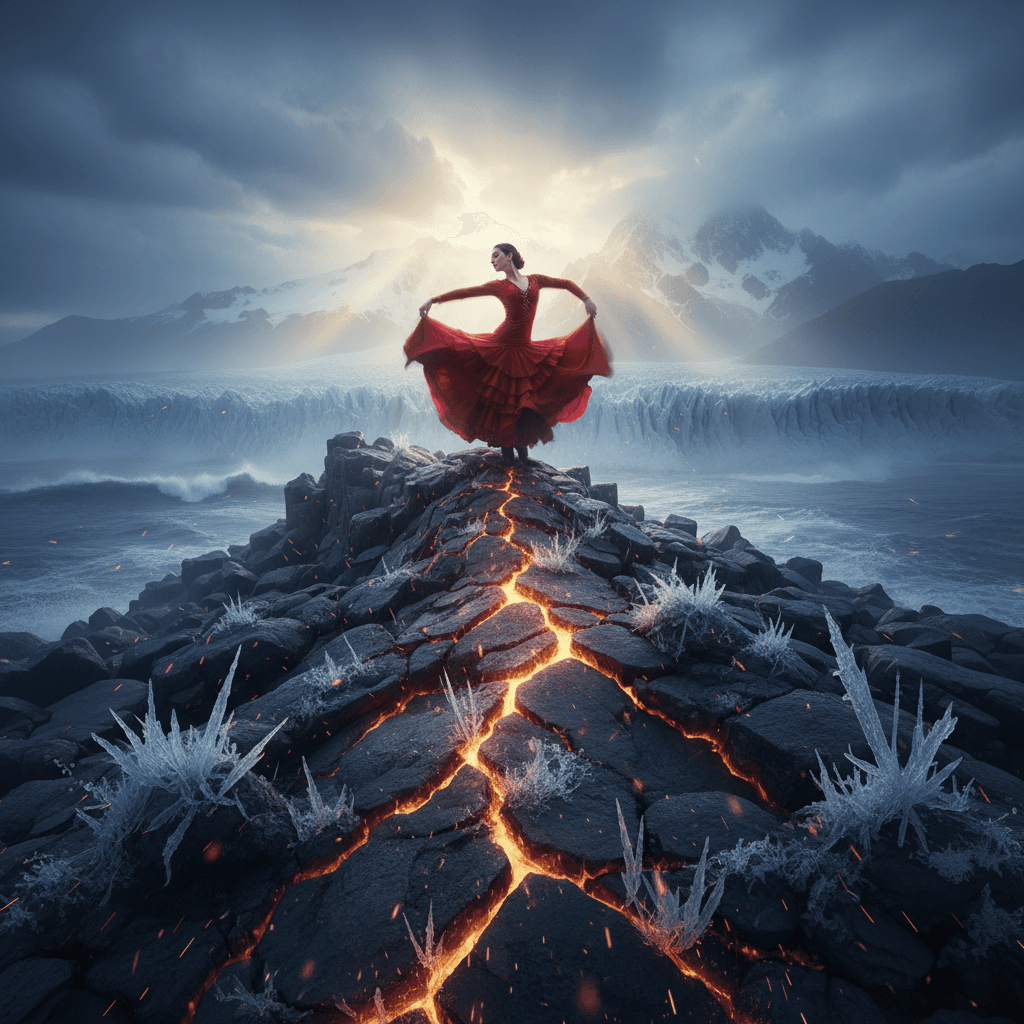Dancing With Risk, Where Fear Stands Still

Dance with the risk beneath your feet; passion carves a path where fear freezes. — Federico García Lorca
Inviting Peril to the Floor
Lorca’s line urges us to move while the ground itself quivers, to treat danger not as a barricade but as a partner. Dancing with risk suggests a practiced intimacy with uncertainty: the more we listen to the floor’s tremor, the more responsive our steps become. In this framing, passion is not naïve bravado; it is disciplined motion that refuses paralysis. Moreover, Lorca’s own life underscores the stakes of such motion. A poet of incandescent intensity, he wrote in a Spain forecast with storms, and his assassination in 1936 haunts his art’s insistence that vitality must answer dread. Thus, the metaphor becomes a mandate: step deliberately, or the chill of fear will decide for you.
Duende: Passion at the Edge
Building on this, Lorca’s “Play and Theory of the Duende” (1933) contends that true art arrives when a dark, earth-born force wrestles the artist into authenticity. Duende is not decoration; it is risk incarnate—the cry in flamenco when voice and heelwork court rupture. In that moment, the dancer does not escape danger; she shapes it. Accordingly, the stage becomes a testing ground where mortality is faced in miniature. Lorca claims the artist’s courage is to invite duende and bear the consequences of its arrival. Passion, then, is a blade that carves meaning from peril, while fear, untransformed, merely hardens into silence.
The Anatomy of the Freeze
Yet biology explains why the floor ices over. Under threat, the amygdala and periaqueductal gray can trigger a freeze response—useful for evading predators, but disastrous when the danger is social exposure or creative risk. We hold our breath, narrow our vision, and wait, trading possibility for a brittle safety. Still, not all arousal is corrosive. The Yerkes–Dodson law (1908) suggests performance peaks at moderate stress; too little dulls us, too much overwhelms us. Lorca’s counsel aligns with this curve: move within risk’s sweet spot, where energy sharpens attention and skill can speak.
Turning Risk into Rhythm
Consequently, passion must be trained to keep time. Through rehearsal, feedback, and incremental stakes, risk becomes rhythm rather than roulette. When challenge meets capability, performers enter flow—a state Mihaly Csikszentmihalyi (1990) described as deep absorption where self-consciousness recedes and action feels inevitable. In this light, the dancer’s heel is a metronome for courage, each strike converting anxiety into pattern. Jazz improvisers, startup founders, and surgeons alike rely on this alchemy: micro-errors are not catastrophes but cues, guiding the next precise step.
Courage Without Recklessness
In turn, Lorca’s urgency does not license foolhardiness. Aristotle’s Nicomachean Ethics (c. 350 BC) locates courage between rashness and cowardice: true bravery feels fear yet acts for a worthy end. Passion’s carving must honor limits—harm avoided, dignity preserved, consequences weighed. Therefore, discernment is part of the dance. We choose the floor, the tempo, the partners. We learn to step back when footing fails, and to step in when hesitation would calcify vision. Responsibility keeps passion from cutting what it meant to shape.
Paths Made by Moving Feet
Ultimately, new paths appear only under motion. A scientist shares ambiguous data and invites better questions; a choreographer stages unfinished work to discover its ending; a citizen speaks up, and the silence thins. Each act scores the ground, turning unwalked terrain into passage. So the aphorism resolves into a practice: attend to the tremor, step with craft, and let passion do its carving. Where fear freezes, nothing changes. But when we dance with the risk beneath our feet, the floor becomes a map, and the map becomes a way through.